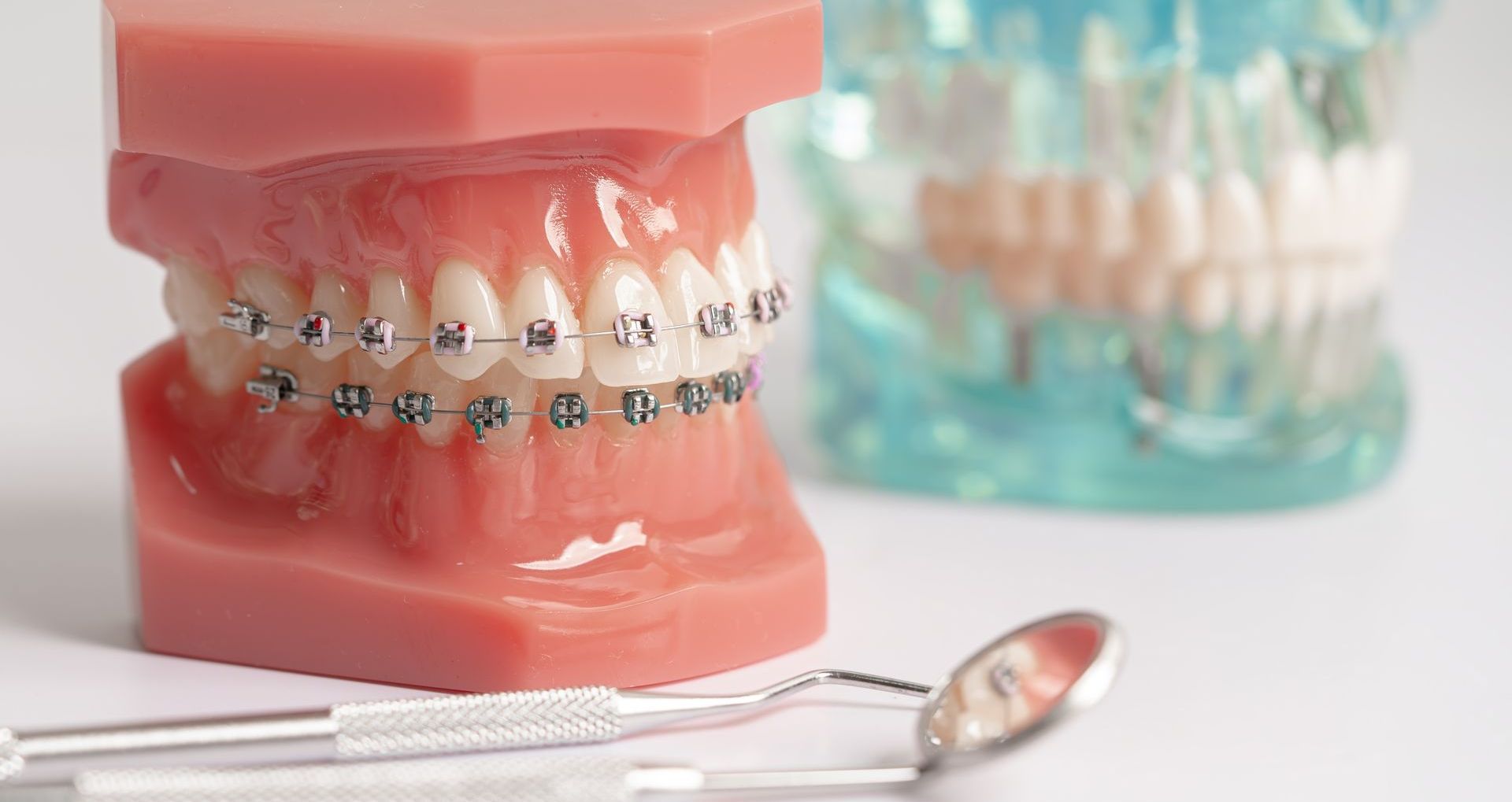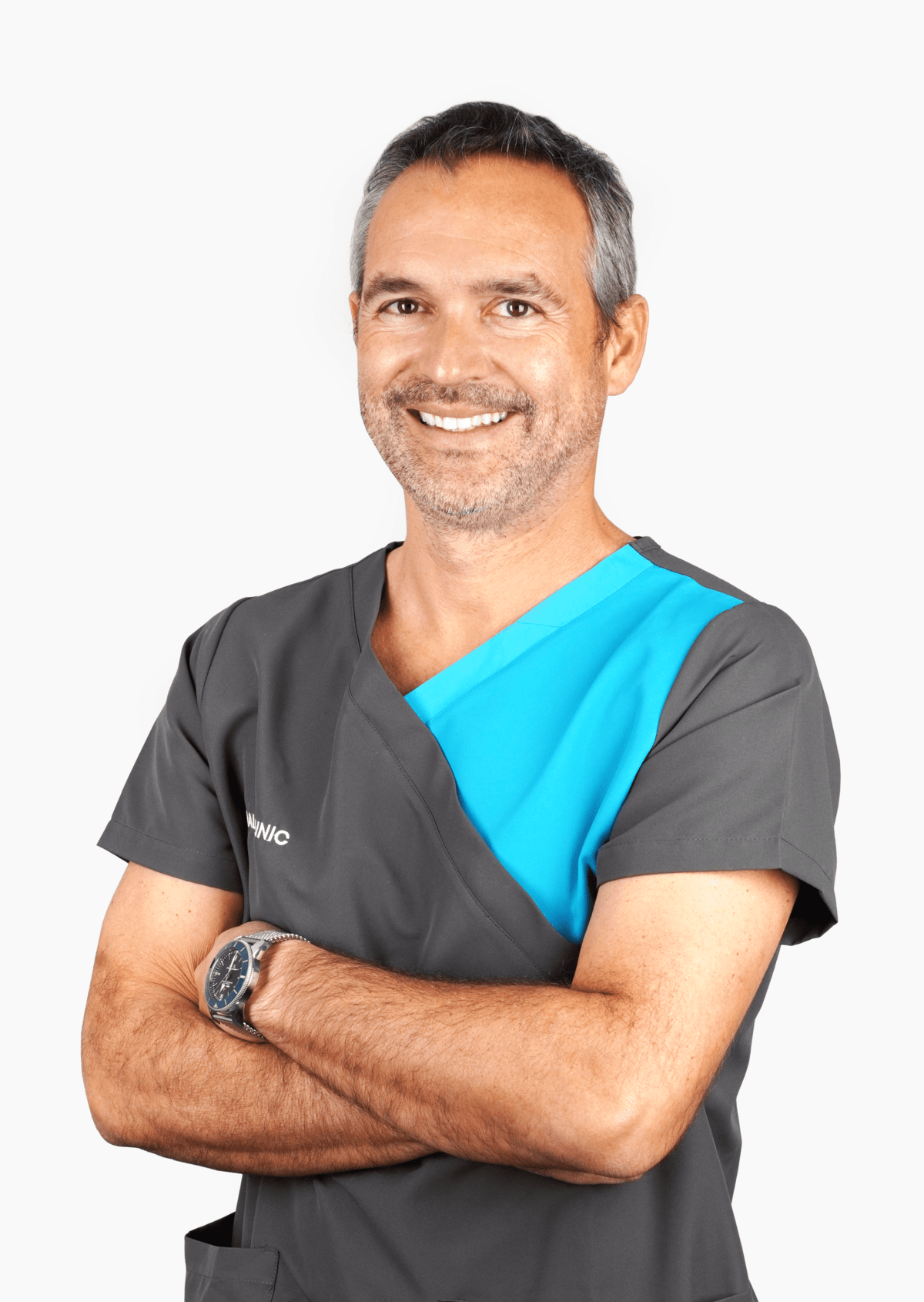Orthodontics
What is the speciality of orthodontics?
Orthodontics - Fixed braces, removable braces and dental aligners
Orthodontics is a speciality of Dental Medicine that treats malocclusion, that is, problems with the alignment of teeth and dentofacial disharmonies. Crooked teeth or teeth that don't fit properly are difficult to keep clean and can be lost early due to tooth decay and periodontal disease. They can also put extra strain on the muscles responsible for chewing and cause painful symptoms in the head, neck and shoulders.

To correct these problems, orthodontists often use fixed braces, removable braces and transparent dental aligners, orthodontic correction devices that are practically invisible. In adults with severe bone disharmonies, a combination of orthodontics and orthognathic surgery may be necessary to resolve severe cases of bone discrepancies.
With technological advances, orthodontic treatments have become more efficient and comfortable, allowing patients of all ages to achieve a healthy and aesthetically pleasing smile. Consulting a qualified orthodontist is the first step towards determining the most suitable treatment plan and starting the journey towards a perfect smile.
What are the benefits of orthodontics for oral health?
Improves oral hygiene:
Aligned teeth are easier to clean with proper brushing technique and correct flossing, which reduces the risk of cavities and gum disease.
Prevention of Dental Problems:
A correct bite can prevent excessive wear on the teeth, as well as the occurrence of dental fractures.
Gum Health:
Well-aligned teeth help keep the gums healthier, reducing the likelihood of developing gingivitis or periodontitis.
Improved Speech:
Properly aligned teeth can improve speech and the diction of certain words.
Confidence and Self-Esteem:
An aligned and aesthetically pleasing smile can boost a patient's confidence and self-esteem.
What Pathologies Can Orthodontics Treat?

Crossbite:
It occurs when some of the upper teeth bite into the lower teeth and can affect both the front and back teeth.

Open bite:
It is characterised by a lack of contact between the upper and lower teeth when the mouth is closed, resulting in an open space.

Deep Bite:
The upper teeth cover the lower teeth excessively, which can cause abnormal tooth wear and problems with the Temporo Mandibular Joint (TMJ).

Diastema:
Spaces or gaps between teeth that can be corrected to improve chewing function, phonetics and aesthetics.

Dental misalignment:
Crooked, crowded or spaced teeth that can cause problems with oral hygiene, phonetics and aesthetics.

Mandibular Prognathism:
When the lower jaw projects ahead of the upper jaw, causing the appearance of a protruding chin and incorrect occlusion.

Maxillary retrognathism:
When the upper jaw is retracted in relation to the lower jaw, affecting facial aesthetics and bite.
Our Clinical Team is here to help you!
Clinical Team
FAQ's
1. From what age can you start orthodontic treatment?
Orthodontic treatment can begin as soon as alignment or bite problems are identified, most commonly from the age of 7. However, there is no age that compromises the results of wearing braces, so adults can also benefit from orthodontic treatment.
2. How long does orthodontic treatment last?
The duration of orthodontic treatment varies depending on the complexity of the case. On average, it can last between 12 and 18 months, but simpler cases can be resolved in less time, while more complex cases may require more time.
3. Do orthodontic braces cause pain?
In the first few days after having your braces fitted or adjusted, it's common to feel some discomfort or sensitivity. This sensation usually subsides after a few days.
4. What types of braces are available?
There are several types of braces, including fixed braces with metal brackets, clear dental aligners such as Invisalign™, and removable braces. The choice depends on the patient's diagnosis and preferences.
5. Is it possible to carry out orthodontic treatment invisibly?
Yes, transparent dental aligners, such as Invisalign™, offer an almost invisible option for correcting misaligned teeth. They are removable and more aesthetic than traditional braces.
6. How much does orthodontic treatment cost?
The cost of orthodontic treatment varies depending on the complexity of the case, the length of treatment and the type of braces used. We have payment plans and agreements with insurance companies to facilitate access to treatment.
7. How important is the use of retainers after orthodontic treatment?
After removing the orthodontic appliance, it is crucial to use retainers to keep the teeth in their new position. Without them, the teeth can return to their original position.
8. Do orthodontic appliances need to be adjusted frequently?
Yes, regular visits to the orthodontist are necessary to adjust the braces and ensure that treatment is progressing as planned. These visits usually take place every 4 to 6 weeks.
9. Are there diet restrictions during orthodontic treatment?
Yes, it is advisable to avoid hard, sticky or very crunchy foods that can damage the fixed appliance. Maintaining a healthy and balanced diet is essential for oral health.
10. Do orthodontic braces make oral hygiene difficult?
Yes, wearing fixed braces can make oral hygiene more challenging. It's important to brush your teeth after every meal and floss with special tools to ensure that all food debris is removed.
Agreements and partnerships
Our Clinical Team is here to help you!










